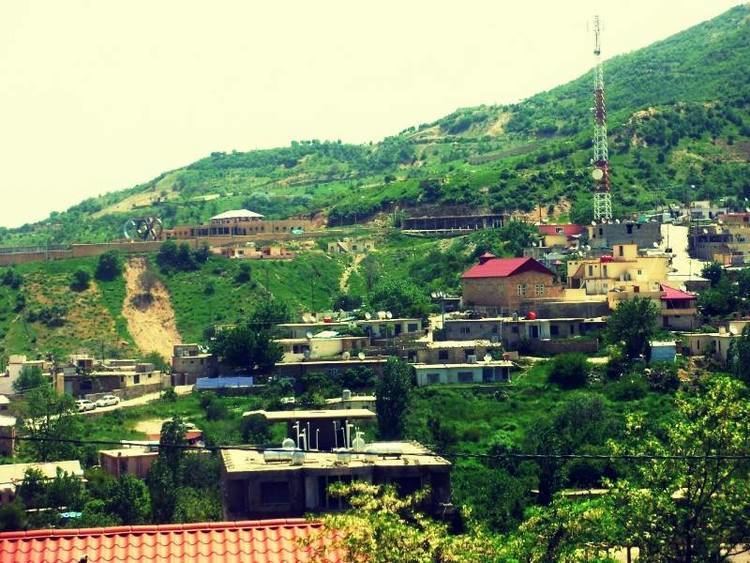Local time Thursday 1:01 AM | ||
 | ||
Weather 3°C, Wind N at 8 km/h, 98% Humidity | ||
2014 11 23 food aid for 120 displaced families in sarsing
Sarsing or Sarsink (Kurdish: سەرسەنگ),(Syriac: ܣܪܣܢܓ) is sub-district part of Amedi district in the province of Dohuk in The north of Iraq - Assyria. The town is mainly inhabited by Assyrians who came to the area from Turkey after the Assyrian Genocide during World War I, and there is also a large Kurdish population. The name "Sarsing" derives from Kurdish meaning "above/upon chest". The name came from the location of the village, which is at one of the highest altitudes in Iraq on a cliff in the Gara Mountains.
Contents
- 2014 11 23 food aid for 120 displaced families in sarsing
- Map of Sersink Iraq
- History
- Climate
- References
Map of Sersink, Iraq
History
The village of Sarsink was founded when 26 Assyrian families from the Hakkari region of Turkey who survived the Assyrian Genocide settled here between the years of 1916-1921. After settling here a number of projects were initiated, with both the first school opening and a new church being built in 1928. The School was founded by Qasha Odisho, son of Qasha Zacharia Lazar. The name of the school was "The Assyrian Private School of Sarsing", and the primary language of instruction was Arabic, as well as Syriac and English. The languages were taught starting from first and second grades respectively. The church was built in 1928 to replace the old one that was built in 1922 with a bigger one. However, During the process of laying new foundations of the new church several pieces of antiques were found. Among these pieces were a cross surrounded by circles sculptured on a stone, and a stony basin used for baptism and a bronze cutter. The Church therefore gained even more importance, and the towns existence Christian history was therefore much older than they once thought.
In 1932 a highway was built passing through Sarsing to and from Duhok and Amadiya. This project gave Sarsing a vital and important position in the region and it offered its residents more access to various daily services.
During the 1950s there were more public works projects, with another school being built in 1952 and the king of Iraq deciding to build a summer palace in the city two years later in 1954(which still exists and is used today as a hospital). A celebration attended by crowds from Sarsing and nearby villages was held during the ceremonial opening of the Palace, and to the north of the palace there was a stage built from stone called Mar Gewarges. in 1954 Mar Mattai church was rebuilt again for a third time, and still exists to this day.
However, during the 70s and 80s the village suffered. As the village occupies a strategic location on the highway between Duhok and Amadiya, the region was often contested between the Kurdish guerrillas and central governments troops, Thus causing a very unstable and shaky period for the city. Fortunately, as the region became occupied by the Government, it avoided destruction during the Al-Anfal Campaign in 1988. However, the cost of that was that the village was militarized and therefore many of its residents fled due to repression. After the Gulf War in 1991, however, the region was liberated from dictatorship and returned to its joyful times, development, farming and normal life.
The town of Sarsing depends on farming and pasturing for their living. Sheep and goats are their main domestic animals and grains, wheat, corn, tobacco, vegetable, grapes, nuts and other type of fruits are their main crops. Sarsing, as an important regional center, also has various nonadministrative and technical positions such as teachers, engineers and managers. Others have engaged in small private business sectors, in addition to the tourism industry.
Climate
The climate of Sarsing is moderately hot in summer and cold in winter. Spring and fall are very short seasons but very pleasant especially the fall, which is the season of ripe fruits. The winter is snowy and in some years snow accumulations could exceed one meter. Rain precipitation is nearly 800 mm annually. Temperature in summer averages 17–22 C at night and 34-38 C at day, while in winter it drops to 5 to -7 C at night and 5-12 degrees at day time.
